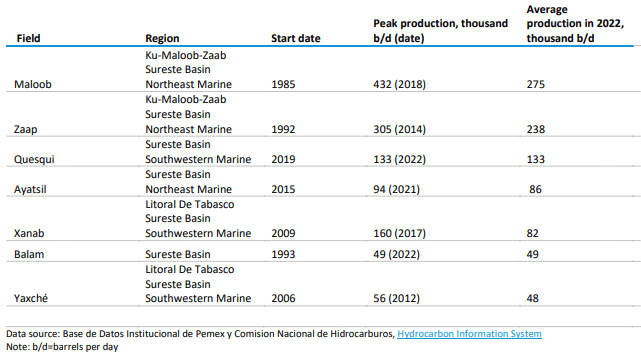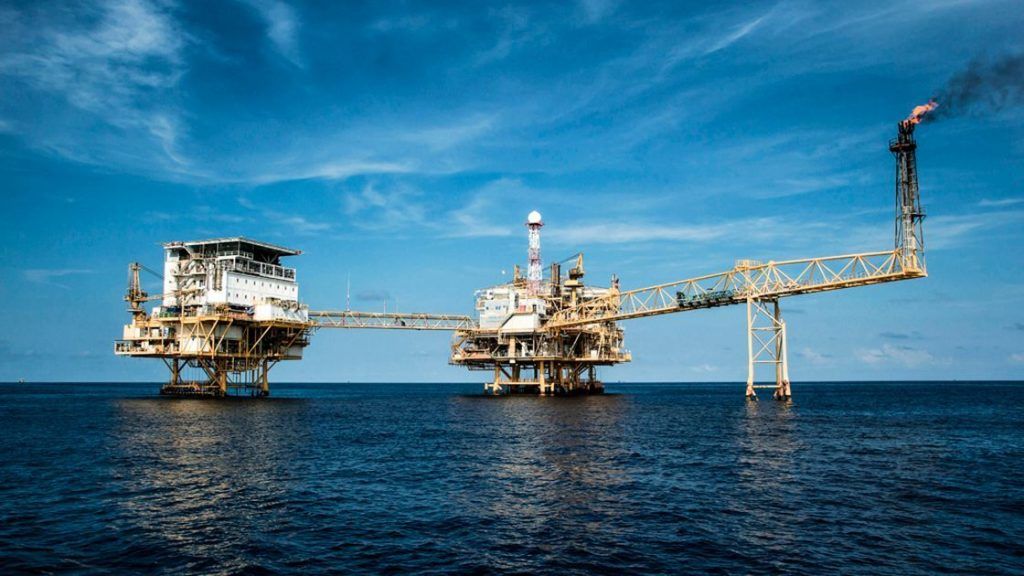As of January 2023, Mexico‘s proved oil reserves totaled 6 billion barrels, including crude oil, lease condensate, natural gas liquids and oil sands.
The Southeast Basin, located primarily off Mexico’s southeast coast (formerly known as the Campeche Basin), accounts for 81% of these reserves.
Of the remaining reserves, 14% are in the Tampico-Misantla Basin and 5% in the Veracruz Basin, according to information from the U.S. Energy Information Administration (EIA).
Mexico’s largest producing oil fields, 2022
Mexico’s reserves are 70% offshore (mainly in the Southeast basin) and 30% onshore (mainly in the Tampico-Misantla basin).
There are currently no known deepwater reserves.
Proven oil reserves
Mexico’s production originates mainly in the Northeast Marine Region of the Southeast Basin.
Production data for 2022 show that Mexico’s three largest fields, collectively called Ku-Maloob-Zaap, accounted for 551,000 b/d of production, down about 36% from their peak in 2013.
To take into account: Article 28 of the Political Constitution of the United Mexican States establishes that the exploration and extraction of oil and other hydrocarbons are exclusive activities of the State.
Mexico maintains direct dominion and inalienable and imprescriptible ownership of these resources.
The hydrocarbons market is a highly regulated market that allows private participation in some sectors.
In the case of oil or fuel export operations, these activities are subject to permits.
Any person wishing to export hydrocarbons must have a hydrocarbon export permit granted by the Ministry of Energy.
In order to obtain such permit, it is necessary to comply with the requirements established in the Hydrocarbons Law and the Agreement that establishes the goods whose import and export is subject to regulation by the Ministry of Energy.
![]()

